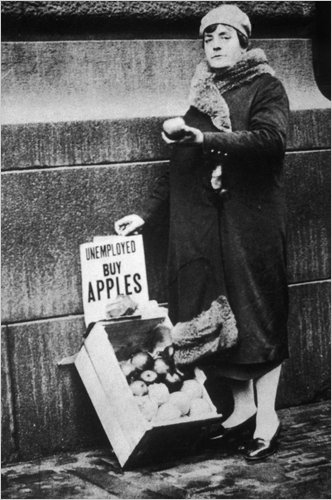| Want to send this page or a link to a friend? Click on mail at the top of this window. |
| More Books and Arts |
| Posted August 23, 2010 |
| Income Inequality and Financial Crisis |
|
By LOUISE STORY |
 |
|
HULTON ARCHIVE/GETTY IMAGES |
| SCRAPING BY in depression era New York City, scenes like this underscored the sudden hardship. |
| Wehaitians.com, the scholarly journal of democracy and human rights |
| More from wehaitians.com |